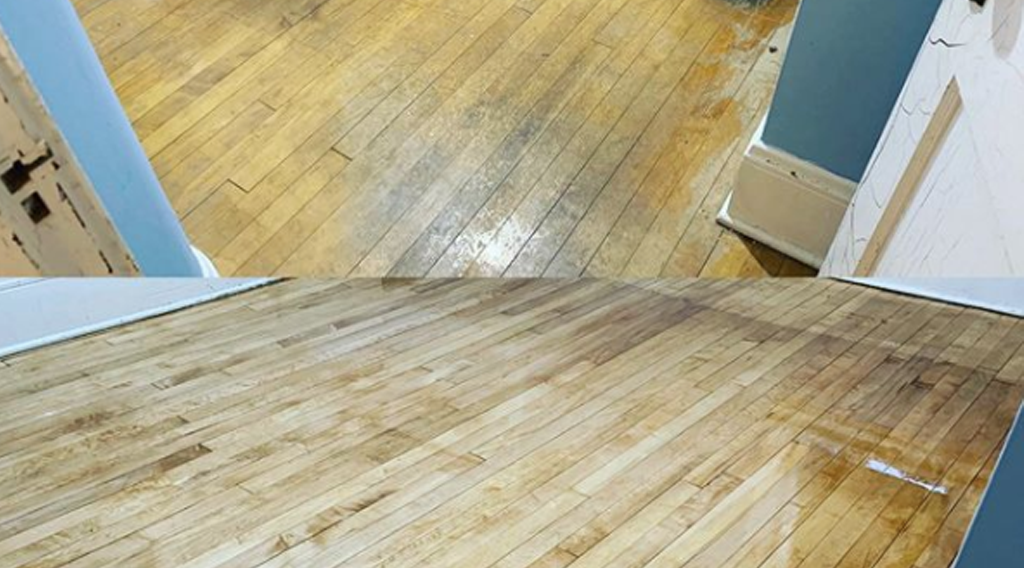10 Everyday Habits That Can Ruin Your Hardwood Floors

10 Everyday Habits That Can Damage Your Hardwood Floors
Hardwood floors are a beautiful and durable addition to any home. They add warmth, elegance, and timeless charm to any room, but they also require some care and maintenance to preserve their beauty. At Choice Hardwoods, we understand that maintaining hardwood floors can be a challenge, especially when daily habits inadvertently cause damage. Over time, certain habits can contribute to unnecessary wear and tear, ultimately diminishing the lifespan and appearance of your floors.
In this article, we’ll highlight 10 everyday habits that can damage your hardwood floors and provide simple tips on how to avoid them. By being mindful of these actions, you can keep your floors looking stunning for years to come.
1. Dragging Furniture Across the Floor
One of the most common mistakes homeowners make is dragging heavy furniture, such as sofas, tables, and chairs, across their hardwood floors. The weight of the furniture combined with the friction from dragging it can leave unsightly scratches and dents in the finish and even the wood itself.
How to Avoid It: Always lift furniture when moving it, rather than dragging it. If you can’t lift a piece of furniture on your own, use furniture sliders or a dolly to make the process easier and less damaging. Furniture sliders are inexpensive and can be placed under the legs of your furniture, allowing them to glide smoothly across the floor without causing damage.
2. Wearing High Heels Indoors
High heels may be stylish, but they can be a nightmare for hardwood floors. The small, concentrated point of pressure from the heel can cause deep indentations and dents in the wood, especially in softer wood types like pine or oak.
How to Avoid It: If you wear high heels frequently, consider taking them off when you’re inside your home. This will reduce the pressure they place on your floors. You could also invest in cushioned heel caps, which can help distribute the pressure more evenly and minimize potential damage. It’s always best to encourage family members and guests to wear indoor shoes with a softer sole or go barefoot, particularly in areas with high foot traffic.
3. Failing to Clean Up Spills Immediately
Water, wine, food, and other liquids can quickly seep into the wood, causing warping, staining, or the growth of mold. Leaving spills unattended for extended periods of time increases the risk of long-term damage.
How to Avoid It: Always clean up spills as soon as they happen, using a soft, dry cloth or paper towels to absorb the liquid. For sticky spills, you can use a damp cloth (not soaking wet) and then dry the area with another clean, dry towel. If your floor is stained due to a spill, immediate cleaning can often reduce the chances of permanent damage.
4. Not Using Rugs or Mats in High-Traffic Areas
Areas that see a lot of foot traffic, such as hallways, kitchens, and entryways, can wear down quickly if left unprotected. Dirt, sand, and grit that get tracked in from outside can scratch the surface of the finish and create a dull, worn appearance.
How to Avoid It: Use rugs or mats in high-traffic areas to act as a barrier between the dirt and your hardwood floor. Make sure to choose mats with soft backing to avoid causing abrasions. Additionally, regularly vacuum or sweep these areas to remove dirt and debris that might cause damage.
5. Not Using Furniture Pads
Hardwood floors are easily scratched by heavy furniture or objects that come into contact with the surface. Chairs, tables, and couches are particularly notorious for leaving scratches and gouges when moved, especially if they’re frequently shifted around.
How to Avoid It: Attach felt pads or rubber caps to the bottom of furniture legs to prevent them from coming into direct contact with the floor. These soft pads create a barrier between your furniture and the floor, minimizing the chances of scratches. Make sure to replace these pads regularly as they wear down.
6. Cleaning with Harsh Chemicals
Using harsh chemicals or ammonia-based cleaners on your hardwood floors can break down the finish over time, leaving it dull and prone to damage. Strong cleaners can also seep into the wood, affecting the grain and color of the floor.
How to Avoid It: Always use cleaning products that are specifically designed for hardwood floors. Bona’s Hardwood Floor Cleaner is an excellent choice, as it’s gentle yet effective. Additionally, avoid using wet mops or soaking the floors with water, as excess moisture can lead to warping and swelling.
7. Using a Wet Mop
While mopping is an effective way to clean floors, using too much water or a wet mop on hardwood floors can be extremely damaging. Water left on the surface for too long can cause swelling, cupping, and warping. Moisture also weakens the finish, making it more vulnerable to scratches and stains.
How to Avoid It: Instead of soaking your mop, use a damp microfiber cloth or a mop with a microfiber head to clean your hardwood floors. Wring out the mop thoroughly before use and mop in small sections, drying each area quickly. Avoid leaving water pooled on the floor.
8. Letting Pet Nails Go Untrimmed
Pets are wonderful, but their sharp claws can wreak havoc on your hardwood floors. Cats and dogs with long or untrimmed nails can scratch the surface of the wood, leaving visible marks, particularly in high-traffic areas.
How to Avoid It: Regularly trim your pet’s nails to keep them short and blunt. This will reduce the likelihood of scratches or gouges in the floor. If trimming your pet’s nails is difficult, consider visiting a groomer for regular maintenance. If you notice existing scratches from your pet’s claws, you can typically buff out small imperfections with a professional hardwood floor repair kit.
9. Wearing Shoes Indoors
While it’s often just a habit to wear shoes inside, hard soles and the dirt and debris they track in can cause considerable damage to your floors. Every time you walk across your hardwood floor in shoes, you’re potentially dragging in dirt, grit, and sand that can scratch or scuff the surface.
How to Avoid It: Make it a rule to remove your shoes before entering the house, especially in rooms with hardwood floors. You can also provide guests with a designated area to remove their shoes, such as a shoe rack or basket by the door. Alternatively, encourage the use of indoor slippers with soft soles.
10. Not Refinishing Your Floors When Needed
Over time, even the most well-maintained hardwood floors will start to show signs of wear, especially in high-traffic areas. The finish can wear thin, making the wood more susceptible to scratches and discoloration. If left too long, minor damage can turn into irreversible problems.
How to Avoid It: Stay on top of your floors’ condition by having them refinished every few years, depending on how much foot traffic they see. At Choice Hardwoods, we recommend refinishing your floors every 5-7 years to keep them looking their best. A professional sanding and refinishing can restore the look of your floors, protecting them from further damage and extending their life.
By being mindful of these everyday habits and making small adjustments, you can significantly extend the life of your hardwood floors and keep them looking as beautiful as the day they were installed. At Choice Hardwoods, we specialize in helping homeowners protect and maintain their hardwood floors through expert refinishing and maintenance. If you’re concerned about the condition of your floors or need help with repairs, don’t hesitate to reach out to us! We’re here to help you preserve the beauty and value of your hardwood floors.

